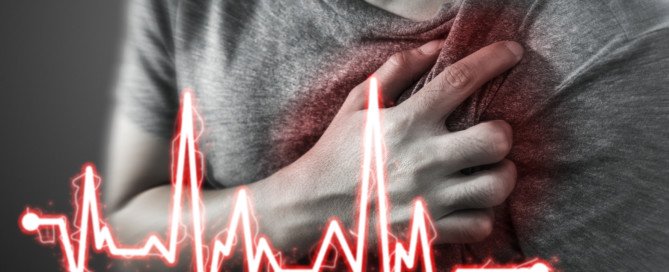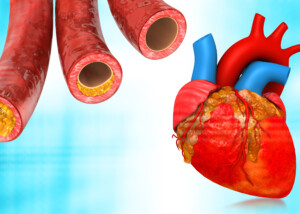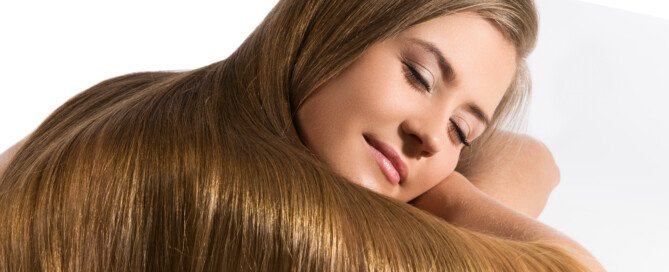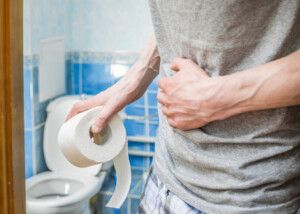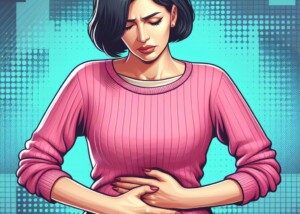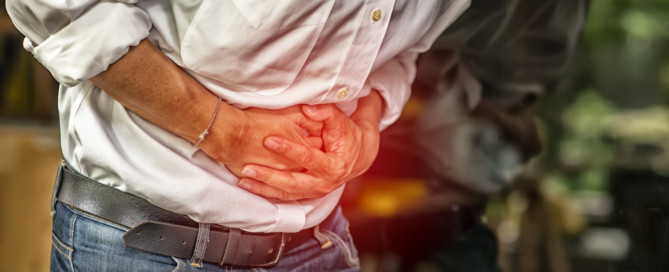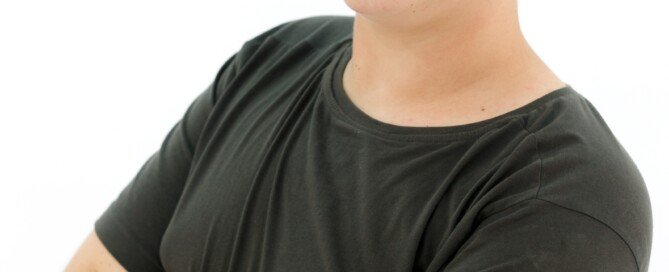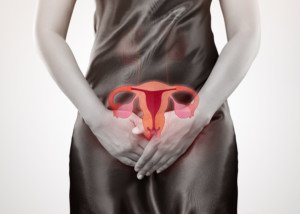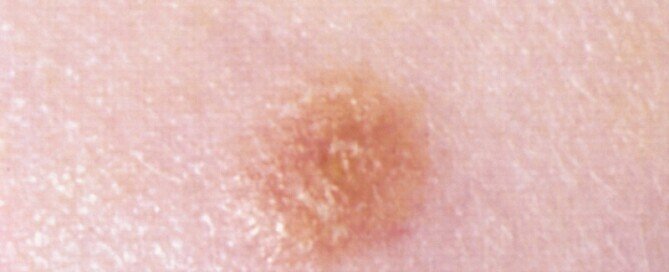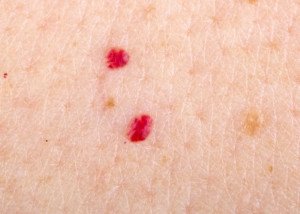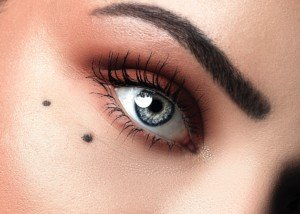Zero Calcium Score & Normal Heart Structure but with PVCs?
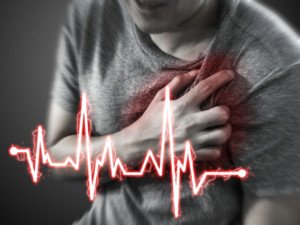
What does it mean when you have premature ventricular contractions (PVC’s) but also a zero calcium score and normal heart structure?
Can the presence of the PVC’s still be indicative of something bad?
I asked this question to cardiologist David N. Smith, MD, a board certified cardiologist with Premier Cardiovascular Care and Wellness in SC.
Dr. Smith explains as follows, “The risk from PVC’s are related to risk of a heart rhythm abnormality that makes it difficult for blood flow and, in certain families, elevates the risk that the electrical system of the heart will become chaotic.”
In other words, the presence of PVC’s, whether you have a zero calcium score or not, becomes relevant if you already have a heart rhythm abnormality or are at risk for an arrhythmia.
This is not related to blockages in the coronary arteries, which is what the calcium score test looks for (hardened or calcified plaque deposits).
Dr. Smith continues, “This risk is different than the risk portended by a calcium score, which indicates risk of blocked arteries leading to heart attacks. In this light, the two are unrelated.
“The calcium score that is very high, however, may reflect ongoing atherosclerotic disease that secondarily lead to electrical system abnormalities manifested as PVC’s.”
Calcium Scoring
Calcium scoring is a diagnostic test performed using a CT scanner to evaluate the amount of calcium in the coronary arteries, which can indicate the presence of hard, stable plaque.
The procedure is quick, typically taking about 15 minutes.
During the test, you lie still on a table while the CT scanner captures detailed images of your heart’s arteries.
These images help assess the extent of calcium buildup, which can be a marker for coronary artery disease.
However, it’s important to note that calcium scoring only detects hard, stable plaque and does not reveal soft or unstable plaque, which can also contribute to cardiovascular risk.
This test is useful for assessing coronary heart disease risk and guiding further evaluation or treatment.
Ironically, some people, the idea of lying inside a scanner (especially one that emits radiation) that looks inside the heart’s arteries can be enough to induce premature ventricular contractions on the spot from anxiety alone.
You can ask the technician if they have any anxiety-relieving objects you can hold onto during the procedure.

Dr. Smith is a published author, national lecturer and Yale-trained physician-scientist certified by the American Board of Internal Medicine in Cardiovascular Disease. From his basic science background combined with advanced clinical research training at the Columbia Mailman School of Public Health, he brings an integrated holistic approach to cardiovascular medicine.
 Lorra Garrick has been covering medical, fitness and cybersecurity topics for many years, having written thousands of articles for print magazines and websites, including as a ghostwriter. She’s also a former ACE-certified personal trainer.
Lorra Garrick has been covering medical, fitness and cybersecurity topics for many years, having written thousands of articles for print magazines and websites, including as a ghostwriter. She’s also a former ACE-certified personal trainer.
.
Top image: Shutterstock/pickingpok
Caffeine Causing PVCs: Why, & How Long It Takes

Find out why caffeine causes premature ventricular contractions (PVCs) and how long after eating or drinking this substance it takes to make your heart “skip” beats.
How long after eating (or drinking a caffeinated beverage) does it take a high-caffeine food to cause PVCs?
“Caffeine effect on PVCs or palpitations is almost instant,” says cardiologist David N. Smith, MD, a board certified cardiologist with Premier Cardiovascular Care and Wellness in SC.
“Likely a few minutes from being absorbed after consuming, but palpitations (the sensation of PVCs) may last for 15 minutes to hours afterwards.”
Anticipating premature ventricular contractions when you’re about to drink coffee can actually trigger them, if your anticipation involves enough anxiety, since anxiety can cause these “palpitations.”
Why does caffeine cause PVCs in some people? Mechanism?
Dr. Smith explains, “This is a reflection of the underlying individual’s sensitivity. The effect of caffeine has a same effect in all hearts, but not everyone would be as sensitive.
“It is thought that caffeine acts on the heart’s cells through something called a receptor.
“Once that receptor is agitated, changes happen within the heart muscle cell, including a change in the flow of calcium that promotes contraction or twitching in just a few cells, rather than the entire heart. This leads to the premature twitch or contraction.”

Dr. Smith is a published author, national lecturer and Yale-trained physician-scientist certified by the American Board of Internal Medicine in Cardiovascular Disease. From his basic science background combined with advanced clinical research training at the Columbia Mailman School of Public Health, he brings an integrated holistic approach to cardiovascular medicine.
 Lorra Garrick has been covering medical, fitness and cybersecurity topics for many years, having written thousands of articles for print magazines and websites, including as a ghostwriter. She’s also a former ACE-certified personal trainer.
Lorra Garrick has been covering medical, fitness and cybersecurity topics for many years, having written thousands of articles for print magazines and websites, including as a ghostwriter. She’s also a former ACE-certified personal trainer.
.
Top image: Shutterstock/NOBUHIRO ASADA
What Gives Hair Its Natural Smell?
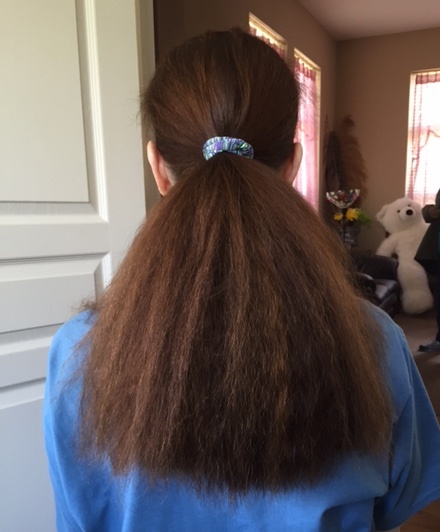
Here’s the explanation for why hair has a NATURAL scent or fragrance, rather than what causes a BAD smell.
This isn’t a “Why does my hair smell bad?” article. It’s a “What gives hair its natural smell?” article.
I asked this question to Dr. Robert Dorin, DO, NYC-based hair care expert and restoration specialist.
The Answer to What Gives Hair Its Natural Scent
“The scent that a human can detect is a result of the natural oils that our sebaceous glands secrete on the scalp and hair shaft itself, along with natural surface bacteria and perspiration,” explains Dr. Dorin.
This is why, no matter what shampoo or conditioner you use (they come with a variety of fragrances), your hair will essentially smell the same.
Right after a shampoo, the fragrance of the product will dominate or superimpose upon your hair’s natural smell.
Sniff your hair after a shampoo, when it’s dry, and you’ll still be able to detect its natural smell, but with the juxtaposition of the product’s fragrance. Next day, this superimposition won’t be as strong.
At some point (unless you shampoo daily), your hair’s smell will be 100 percent from the natural oils (plus surface bacteria/perspiration).
Some people think that hair’s natural smell comes from products you put on it.
However, as the products’ fragrance wears off, your hair’s natural scent always returns to the same smell.
I began noticing this myself with my hair when I was about 11 years old. It always has the same scent after the shampooing wears off, though fresh after a shampoo, I can detect the scent (from the natural oils) mixed in with the shampoo/conditioner.
Intuitively I’ve always known that “it’s from the natural oils.”
The natural scent varies in strength. Some days it’s stronger than others, and I can often smell it when I’m just sitting still at my computer or lying in bed.
Your hair’s natural scent, from its oils, should NOT be bad.

Freepik
When your scalp is healthy, free of a skin disease or infection, your hair’s natural smell should actually be pleasant. I describe mine as sweet.
Like fingerprints, the natural scent of one’s hair from its oils is unique.
If we had the noses of dogs, we’d be able to differentiate among a million heads of hair!
What goes on under the skin in the scalp isn’t the same as with the armpits, as far as causes of odor, which is why your scalp—even when you haven’t washed your hair for a while and are perspiring—won’t smell like your underarms.
But have you ever sniffed other peoples’ hair?
Some women sniff their young children’s hair, enjoying the result.
I once read of a woman who had no choice but to inhale her young son’s hair as they huddled squeezed together in the basement during a tornado. She described it as “sweet.”
I’ve sniffed boyfriends’ hair, and it was always a nice scent—from the natural oils, not from shampoos and other products.
The natural scent of your hair should be a fragrance, not an odor.
If it’s an “odor,” then there’s either a fungal infection, dermatitis or an influx of environmental particulates (like smoke, cooking fumes) adhering to hair shafts, accumulating dirt, grime and dead skin cells—and causing natural bacteria to proliferate and feed off of this accumulation.
But if we’re talking just the natural oil production of the sebaceous glands (the oil is called sebum), this should actually be a GOOD smell.
Natural oils are essential for good scalp health. The oil production begins beneath the skin surface. Each hair follicle has a sebaceous gland attached to it.
The oil gets onto the hair shaft, making its way above the skin surface.
The sebum makes its way down hair shafts when you run your fingers through your hair, rub or scratch your scalp, and especially when you brush or comb your hair; the natural oils get “spread” down the shafts, which is why your hair emits a sweet natural scent even at the tips.
Dr. Dorin of True & Dorin provides creative hair loss solutions, including advanced hair transplant techniques and the latest in regrowth technology, to ensure that his clients achieve their desired results.
 Lorra Garrick has been covering medical, fitness and cybersecurity topics for many years, having written thousands of articles for print magazines and websites, including as a ghostwriter. She’s also a former ACE-certified personal trainer.
Lorra Garrick has been covering medical, fitness and cybersecurity topics for many years, having written thousands of articles for print magazines and websites, including as a ghostwriter. She’s also a former ACE-certified personal trainer.
Soy Intolerance vs. Allergy, and IBS
There IS a difference between an soy intolerance and an actual allergy to this food, including how it relates to irritable bowel syndrome.
“It is important to differentiate soy allergy from soy intolerance,” explains Dr. Saad Habba, MD, an attending consultant physician at Overlook Medical Center in Summit, NJ.
“Soy allergy is a true immunological process that involves stimulation of immune response in the body and [the body] considers soy as basically a foreign object,” says Dr. Habba, a gastroenterologist.
“The body responds to this allergy like any other response and varies from simple symptoms such as abdominal bloating and discomfort, to rash and sometimes difficulty in breathing.
“The response is dependent upon the degree of reaction to soy, similar to any other allergen.
“Soy intolerance, on the other hand, does not involve a serious reaction to soy. In a sense, it would not cause any symptoms beyond abdominal bloating and discomfort.
“Unlike soy allergy, this never progresses to any complication beyond abdominal symptoms.”
Irritable Bowel Syndrome
Dr. Habba explains, “Soy intolerance is not very common and certainly is not as common as lactose intolerance, which can cause chronic diarrhea and abdominal discomfort in 10 percent of patients diagnosed with IBS.
“In general when one is treating symptoms of abdominal discomfort, bloating and diarrhea, one would first try to abstain from lactose-containing products before resorting to soy abstinence.
“If indeed soy intolerance is present, it would most likely be the cause for bloating, abdominal discomfort and diarrhea. It would not account for constipation or other symptoms of IBS.”
Thus, if you have IBS and are eating soy, chances are very high that your IBS symptoms are not being influenced by this, but by some other agent such as lactose or even mental stress.
 Dr. Habba pioneered the concept of IBS being a wastebasket diagnosis and collection of different entities rather than a true single medical condition. He’s been presented and published in 26 national and international medical journals and symposia.
Dr. Habba pioneered the concept of IBS being a wastebasket diagnosis and collection of different entities rather than a true single medical condition. He’s been presented and published in 26 national and international medical journals and symposia.
 Lorra Garrick has been covering medical, fitness and cybersecurity topics for many years, having written thousands of articles for print magazines and websites, including as a ghostwriter. She’s also a former ACE-certified personal trainer.
Lorra Garrick has been covering medical, fitness and cybersecurity topics for many years, having written thousands of articles for print magazines and websites, including as a ghostwriter. She’s also a former ACE-certified personal trainer.
.
Top image: Freepik.com, jcomp
Does an IBS Attack Happen Suddenly or Slowly?
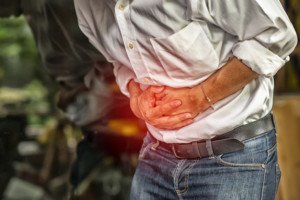
Here is information about the onset of an attack of irritable bowel syndrome.
“The onset of IBS symptoms is usually slow and ongoing for a prolonged period of time,” says Dr. Saad Habba, MD, an attending consultant physician (gastroenterologist) at Overlook Medical Center located in Summit, NJ.
Dr. Habba further explains, “Attacks do not come on acutely and do not behave as an ‘on and off’ switch. Accordingly, they may stay for days and sometimes weeks, particularly if the underlying precipitating factor is constantly introduced, such as lactose intolerance, sugar intolerance or stress.
“The association of stress and psychosomatic influences in IBS is well-documented and may play an important role in the severity and length of symptoms.
“There is no set period as to when an episode usually occurs or disappears, as every person reacts differently to this condition.”
If you’ve never had any of these issues, but then one day have a sudden onset of peculiar diarrhea that persists, don’t assume this is probably IBS.
This happened to me, and even though a nurse thought it might possibly be a first-time attack of irritable bowel syndrome, it turned out to be a condition called microscopic colitis—which is frequently misdiagnosed as IBS.
 Dr. Habba pioneered the concept of IBS being a wastebasket diagnosis and collection of different entities rather than a true single medical condition. He’s been presented and published in 26 national and international medical journals and symposia.
Dr. Habba pioneered the concept of IBS being a wastebasket diagnosis and collection of different entities rather than a true single medical condition. He’s been presented and published in 26 national and international medical journals and symposia.
 Lorra Garrick has been covering medical, fitness and cybersecurity topics for many years, having written thousands of articles for print magazines and websites, including as a ghostwriter. She’s also a former ACE-certified personal trainer.
Lorra Garrick has been covering medical, fitness and cybersecurity topics for many years, having written thousands of articles for print magazines and websites, including as a ghostwriter. She’s also a former ACE-certified personal trainer.
.
Top image: Shutterstock/Bannasak Krodkeaw
Strength Training for Prader-Willi Syndrome

Here’s why people with Prader-Willi syndrome should train with weights (strength training).
One of the classic features of the genetic condition of Prader-Willi syndrome is that of very poor muscle tone—the result of low muscle mass. Patients also have a very slow metabolism.
Muscle is the body’s most metabolically active tissue—it burns more calories just for sustenance than any other body tissue. This is something that every fitness expert knows.
Personal trainers, such as myself in the past, push the idea of performing compound strength training to boost resting metabolism.
A person with Prader-Willi syndrome will experience an increase in resting metabolic rate by building lean muscle tissue via compound strength training.
Curling dumbbells (biceps curls) is perhaps the most common weightlifting exercise.
Beginners are notorious for spending inordinate amounts of time curling.
However, it’s a very inefficient exercise for raising metabolic rate because it essentially works only one muscle group, the biceps.
This is a very small muscle group, and working it even very hard won’t do much to increase metabolism.
To get the greatest bang for the buck, a patient with Prader-Willi syndrome should perform compound strength training: more than one muscle group at once…and large muscle groups at that.
So instead of the biceps curl, the trainee would do a deadlift, bent-over dumbbell row, standing barbell row, lat pull-down and seated row.
Of these compound exercises, the deadlift is perhaps the best.

Shutterstock/Reshetnikov_art
Though this exercise is performed in strongman and powerlifting competitions, it’s one of the simplest movements to learn!
Don’t let the simplicity or “un-fanciness” of the deadlift fool you; this is one of the best exercises ANYBODY can do, including those with Prader-Willi syndrome.
Get Cleared by a Doctor First
Scoliosis (abnormal curvature of the spine) is another feature that often comes with Prader-Willi syndrome.
The patient should be cleared by a physician for strength training, particularly the deadlift.
Some strength training movements can be contraindicated by scoliosis, though not all PWS patients have this spinal problem.
People with Prader-Willi syndrome can gain muscle mass.
This was demonstrated in a study (J Pediatr 2003;142:73-8). Children and adolescents with PWS performed standing calve raises.
This is an isolation exercise (non-compound), but was chosen for the study because it’s super easy to perform and requires only a stair to do, rather than weightlifting equipment.
The report states: In persons with PWS, a well-defined and easy-to-accomplish training program improves local body composition and has generalized effects on physical activity and capacity, opening up a new therapeutic option to improve metabolic conditions.
If this is the conclusion of a study involving mere calve raises, imagine the metabolic effect that compound weight training (e.g., deadlift, overhead barbell press, bench press, lat pull-down) would have.
Working several muscle groups at once means that much more of an increase in lean muscle tissue—translating to an increase in resting metabolism. This will have a positive effect on body weight management.
Other compound exercises to consider: flat and incline bench press, incline dumbbell press, seated chest press, leg press, kettlebell swing and weighted walking lunge.
There are many variations of the squat, but the Prader-Willi patient could benefit from whichever version he or she feels most comfortable with.
Some form of squatting (with a doctor’s clearance if the patient has scoliosis) should be included in the strength training program.
You may be thinking that a person with PWS should stick to “simpler” strength training such as using only machines, using tension bands and using very light dumbbells for various arm movements.
However, people with Prader-Willi syndrome perform in various sports for Special Olympics that require more coordination than a bench press, kettlebell swing, lat pull-down, leg press, squat and deadlift. They even do martial arts.
When Evan Matesavec was six years old, he achieved a black belt in taekwondo. At that time he was doing 25-30 pushups and has Prader-Willi syndrome.

Evan Matesavec in 2013
People with Prader-Willi Syndrome will benefit from “big” compound strength training movements.
The compound exercises I’ve mentioned require either standing in one spot, sitting or lying down (with the exception of the walking lunge).
Though my recommended strength training exercises are highly effective when performed for increasing healthy muscle mass, they are also very simple to do.
 Lorra Garrick is a former personal trainer certified by the American Council on Exercise. At Bally Total Fitness she trained clients of all ages for fat loss, muscle building, fitness and improved health.
Lorra Garrick is a former personal trainer certified by the American Council on Exercise. At Bally Total Fitness she trained clients of all ages for fat loss, muscle building, fitness and improved health.
.
Top image: crossfitpowervalley.comblogarchives06-2016
Sources: globalgenes.org/raredaily/evan-with-prader-willi-syndrome-uses-taekwondo-to-show-his-fighting-spirit/ and gwinnettdailypost.com/news/2013/feb/27/6-year-old-battling-rare-syndrome-goes-for-black/
Colon Cancer Diarrhea vs. IBS Diarrhea: Is There a Difference?

A gastroenterologist discusses differences between colon cancer diarrhea and the diarrhea caused by IBS.
Do they look the same? How are they different?
You may have read that “constipation alternating with diarrhea” is a possible symptom of colon cancer.
The alternating feature here is a red flag (though benign conditions can also cause this).
But what about just plain diarrhea…without any constipation?
“Diarrhea is a rare symptom of colon cancer,” says Pankaj Vashi, MD, Lead National Medical Director, National Director, Gastroenterology/Nutrition/Metabolic Support, Cancer Centers Treatment of America.
“Diarrhea is usually related to travel, food allergy/intolerance or inflammation/infection in the bowel. Chronic diarrhea can be seen in IBS.
“Every patient with diarrhea should have a thorough evaluation including a detailed history and physical, stool, radiological and endoscopic studies before labeling it to be secondary to IBS.
“Diagnosis of IBS in a patient is usually made after excluding other treatable conditions.”
Don’t accept a diagnosis of irritable bowel syndrome until every other possible cause of your diarrhea has been ruled out, and that will require extensive testing.
Sudden-onset diarrhea, in the absence of having recently traveled or taken a new medication that can cause the side effect of diarrhea, can be alarming.
This happened to me. Where did my diarrhea suddenly come from? And it looked really weird, too.
Right away, the gastroenterologist’s nurse, as I was being prepped for a colonoscopy, mentioned that it could be IBS.
He also mentioned that it could be stress related, and he told me that his divorce had caused him to have diarrhea for three weeks.
But I was betting that his diarrhea didn’t look abnormal like mine did.
A doctor needs to look inside your colon, among other tests, before it’s determined that you have IBS.
Diarrhea, even weird looking, is a common symptom in the mass of population, though it CAN be caused by colon cancer. But it’s not a hallmark feature of colon cancer.
My diarrhea turned out to be caused by microscopic colitis (colon tissue samples are viewed under a microscope for diagnosis), a benign condition that does NOT increase the risk of colon cancer.
 For 20 years Dr. Vashi was instrumental in developing robust gastroenterology, and nutrition and metabolic support programs in all five Cancer Treatment Centers of America centers.
For 20 years Dr. Vashi was instrumental in developing robust gastroenterology, and nutrition and metabolic support programs in all five Cancer Treatment Centers of America centers.
 Lorra Garrick has been covering medical, fitness and cybersecurity topics for many years, having written thousands of articles for print magazines and websites, including as a ghostwriter. She’s also a former ACE-certified personal trainer.
Lorra Garrick has been covering medical, fitness and cybersecurity topics for many years, having written thousands of articles for print magazines and websites, including as a ghostwriter. She’s also a former ACE-certified personal trainer.
.
Top image: ©Lorra Garrick—
Source: cancercenter.com
Are Big Tall Kids Rarely the Victims of Bullies?

It’s a myth that kids who are big or husky hardly ever get bullied.
Ever notice that in TV shows and movies, a boy who’s a bully is almost always bigger than his classmates? He’s taller and has a chubby or husky body, a portly kid.
Oddly, in films when a bully is a girl, she’s usually not big or hefty.
What’s up with the stereotype of a male bully being the biggest kid in the class?
Think back to your grade school and junior high school days.
Remember the bullies? Were they bigger than most kids their age?
Were their victims usually smaller?
Big tall kids are not immune to getting bullied.
Many big and tall kids get harassed about their size — by much smaller classmates.
When you get right down to it, it’s what’s inside that matters—inside that towering or big body, or that petite or slight frame.
And if what’s inside is full of pain, hurt and anger—then the conditions are ripe for producing a bully.

Shutterstock/igor kisselev
Kids don’t become mean just because they’re taller than everyone else or husky.
Ask yourself what is it about being chubby or tall that would make a child mean spirited. It’s a complete myth that a small child can’t bully a larger classmate.
It’s utter nonsense to believe this, yet on an episode of “Judge Judy,” I was livid when she blasted the defendants that their husky tall grade-school boy couldn’t have possibly been the victim of bullying by the plaintiff’s boy—because the plaintiff’s child was a lot smaller.
Judge Judy actually scolded something pretty close to, “There is NO way he bullied your kid; he’s half your kid’s size!” And here I was, thinking, “Judy Dear, where’s YOUR thinking cap?
I’ve witnessed situations in school in which the bully was half the size of the victim!”
Why do kids become bullies?
- Because they’re big?
- Or because of something going on inside the household?
- Do kids really think, “Gee, since I’m half a foot taller than everyone else in my grade, I might as well go around being mean” ??
Though it’s often said that a small child becomes a bully to prevent being bullied by bigger kids, the conditions for this defense mechanism have to already be in place.
I cite the case of a girl I’ll call Kera who went to my junior high school. She was shorter than most kids and had a normal, lean build for an adolescent (her adult height is probably 5-2, based on her relative height back in junior high).
I was told that in grade school (I didn’t attend Kera’s grade school), she was ridiculed as she struggled to learn English, having moved to the States from another country.
It’s logical to deduce that she became a bully come junior high to put an end to being the victim, and maybe some of this was related to her size.
But the conditions had to be there to begin with: lack of support from her parents; no adult role model to help her put things into perspective and deal with adversity constructively.
But small stature, in and of itself, did not turn Kera into a bully.
It didn’t turn Nunzio into a bully either. He was a lot smaller than his victim. Nunzio hardly looked like a bully, being short and scrawny.
His victim was taller, but not taller than average (yes, Nunzio was that short). But the victim was husky and had a good deal of weight on his bully.
So you see, being big, fat or husky doesn’t turn a child into a bully, and being small, skinny or short doesn’t automatically make a child a victim OR a bully.
What makes kids become mean has everything to do with the relationship they have with immediate family members, particularly the parents, and what kinds of behavior they witness among their parents.
Another Explanation for Why Bullies Often Are Smaller, Shorter than Their Victims

Bullying involves “an imbalance of power,” says Israel (Izzy) Kalman, MS, nationally certified school psychologist; director of Bullies to Buddies: and author of numerous books and publications on bullying and relationship problems.. The bully is supposed to be the stronger one, he continues.
However, very often, the bully is weaker than the victim—or apparently so, anyways, i.e., shorter, weighing less.
“But there is a very good reason that the so-called bully is often weaker than their victims,” continues Dr. Kalman.
“We no longer live in nature. If we live in nature and I pick on someone stronger than me, I am insane. They’re going to beat the crap out of me or kill me.
“But we no longer live in nature. We live in civilization. We are not allowed to injure or kill each other.”
So here’s what might be going on inside the bully’s head, though not necessarily word for word, but rather, an overall impression, says Dr. Kalman:
“Today, if I pick on kids who are weaker than myself, I look like a schmuck. If I’m smart, I’m going to look for the biggest kid in the class.
“I’m going to insult him and his mother. I’m going to drive him mad. And if he dares to lay a hand on me, he’s the one who’s going to get in trouble!
“So I’m going to pick on kids who are stronger than me, and everyone will admire me. But if I pick on kids who are weaker than me, I’m going to look like a jerk. No one is going to respect me.”
Final Thoughts
It’s a myth, a stereotype, that a bully is always bigger and taller, or physically stronger, than his or her victims.
Sometimes, the victim of bullying is one of the biggest kids in the class.
 Dr. Kalman is a psychotherapist in private practice and has treated many victims of bullying for over 20 years. He has published extensively on solutions to bullying.
Dr. Kalman is a psychotherapist in private practice and has treated many victims of bullying for over 20 years. He has published extensively on solutions to bullying.
 Lorra Garrick has been covering medical, fitness and cybersecurity topics for many years, having written thousands of articles for print magazines and websites, including as a ghostwriter. She’s also a former ACE-certified personal trainer.
Lorra Garrick has been covering medical, fitness and cybersecurity topics for many years, having written thousands of articles for print magazines and websites, including as a ghostwriter. She’s also a former ACE-certified personal trainer.
.
Top image: Shutterstock/Petrenko Andriy
Can IBS Cause Bloody Mucus?

Is it at all possible for irritable bowel syndrome to cause any bleeding, or blood to appear in the mucus that comes out when you have a bowel movement?
“Mucus is the product of shedding of lining of the large intestine,” says Dr. Saad Habba, MD, an attending consultant physician (gastroenterologist) at Overlook Medical Center in Summit, NJ.
He adds, “It is a reaction to any irritant that may start the process. In IBS, the colon seems to react by shedding some of its inner lining which is expressed visually as mucus.
“In IBS, bloody mucus never occurs. So if one sees blood in any shape or form with or without mucus, the diagnosis of IBS would be erroneous. and one is advised to seek the attention of a gastroenterologist to explain the source of bleeding. Bleeding is never a sign of IBS.”
 Dr. Habba pioneered the concept of IBS being a wastebasket diagnosis and collection of different entities rather than a true single medical condition. He’s been presented and published in 26 national and international medical journals and symposia.
Dr. Habba pioneered the concept of IBS being a wastebasket diagnosis and collection of different entities rather than a true single medical condition. He’s been presented and published in 26 national and international medical journals and symposia.
 Lorra Garrick has been covering medical, fitness and cybersecurity topics for many years, having written thousands of articles for print magazines and websites, including as a ghostwriter. She’s also a former ACE-certified personal trainer.
Lorra Garrick has been covering medical, fitness and cybersecurity topics for many years, having written thousands of articles for print magazines and websites, including as a ghostwriter. She’s also a former ACE-certified personal trainer.
.
Top image: ©Lorra Garrick
How Common Are Red Moles?
Here is information about red melanomas vs. benign red moles in terms of physical appearance.
“Benign moles can appear reddish in part due to sunburn or irritation,” says Dr. Michael Shapiro, MD, Medical Director and Founder of Vanguard Dermatology in NYC, NY.
Dr. Shapiro continues, “Repeated sunburn to moles will increase the risk of the mole turning cancerous, so use caution when going outside.
“Irritation can make moles red due to chaffing, which won’t directly increase the risk of melanoma, but it’s important to use caution, as it may cause the mole to be more sensitive, increasing its susceptibility to cancer.”
Melanoma vs. Benign Mole
“For most professional, experienced dermatologists, it is fairly simple to define a melanoma spot from a benign,” says Dr. Shapiro.
“However, there are ways to help the average patient to understand the difference from a red melanoma from a red benign spot such as angiomas.”
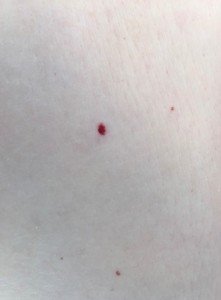
Angiomas
Angiomas (“strawberry marks,” hemangiomas) are concentrations of very tiny blood vessels and appear as red dots or moles on the skin.
They increase with age and can be elevated and quite striking in their strawberry/red color.
“A malignant spot will differ from a benign mole, in that it will have different variations of the color red or any other color that is not consistent throughout,” explains Dr. Shapiro.
“A malignant mole will also be asymmetrical and bumpy as opposed to a benign mole being symmetrical and fairly smooth throughout.
“While these are some tips to help assist you in self-diagnosis, if you are unsure in any way seek out professional medical attention. Request a biopsy.”
The image at the top of this post is of a melanoma.
Other Red Spots on the Skin
Dr. Shapiro further explains, “There are several different kinds of red or dark pink or magenta benign spots that may also appear on the skin.
“Dermatofibromas are small, firm, typically red bumps caused by an increase of fibroblasts or soft tissue cells under the skin.
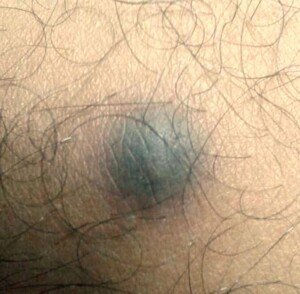
Dermatofibroma. Mohammad2018 CC BY-SA
“They are usually itchy and found on the legs and can be removed through surgery if the pain becomes a severe problem.
“Pyogenic granulomas can also appear on the skin — not to be confused with malignant moles — these are caused by excessive growth of small blood vessels and swelling.
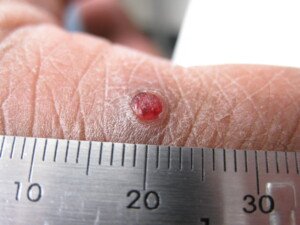
Pyogenic granuloma. Kilbad at English Wikipedia, CC BY
“These are common after an injury to the skin and usually disappear without any treatment.”
If a brown, tan or beige mole starts developing a red portion, immediately see a dermatologist, as this may be a sign of melanoma; a biopsy will rule it in or out.
Keep track of your moles with monthly skin self-exams so that you know which ones are normally red, tan, brown, etc.
 Dr. Shapiro is a board certified dermatologist and Mohs surgeon and has treated over 12,000 Mohs cases for skin cancer. He is widely published in peer-reviewed academic journals.
Dr. Shapiro is a board certified dermatologist and Mohs surgeon and has treated over 12,000 Mohs cases for skin cancer. He is widely published in peer-reviewed academic journals.
 Lorra Garrick has been covering medical, fitness and cybersecurity topics for many years, having written thousands of articles for print magazines and websites, including as a ghostwriter. She’s also a former ACE-certified personal trainer.
Lorra Garrick has been covering medical, fitness and cybersecurity topics for many years, having written thousands of articles for print magazines and websites, including as a ghostwriter. She’s also a former ACE-certified personal trainer.

